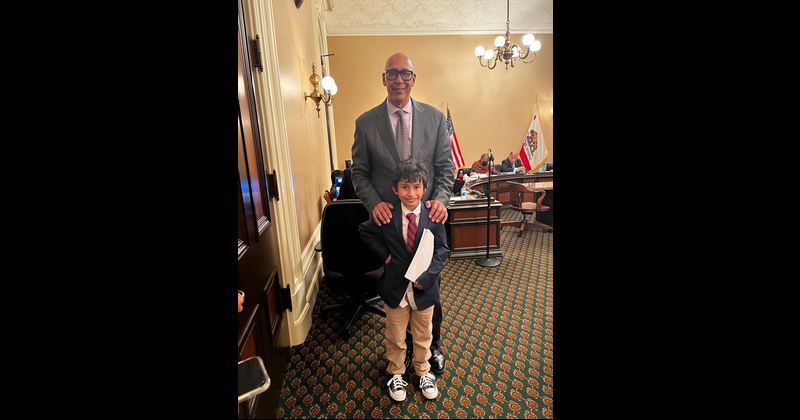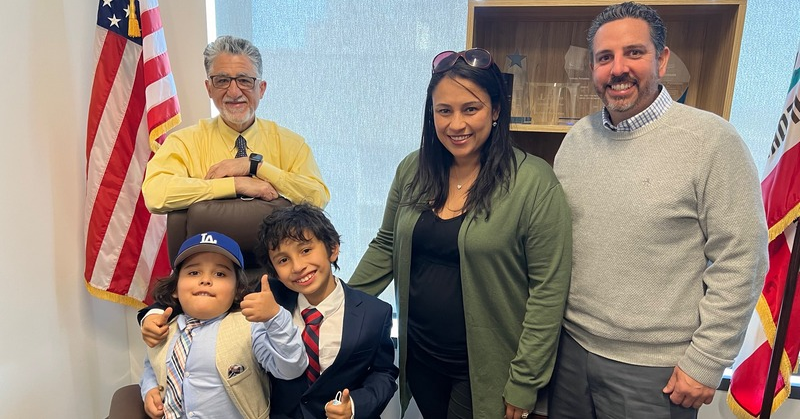
Zacky Muñoz with State Representative Chris Holden

Zacky Muñoz

Zacky Muñoz standing outside the California state Capitol building. [Courtesy photo]

Zacky Muñoz with his family and Senator Portantino

Zacky Muñoz testifying in Sacramento

‘The Zacky Bill’ or California Assembly Bill (AB) 2640 named after Zacky Muñoz, 10-year-old Pasadena student who is advocating for the creation of a virtual food allergy resource guide to ensure the safety of kids with allergies while in school, is wending its way through the California assembly.
If passed, the bill would create an online California Food Allergy Resource Guide to provide school districts, parents, caregivers and students with information necessary to prevent and address anaphylaxis, a severe, potentially life-threatening allergic reaction that occurs within seconds or minutes of exposure to an allergen.
Among other things, the bill directs the Department of Education to include state and federal resources, methods to initiate individualized food allergy management and prevention plans, and other means to minimize risk of food anaphylaxis in school.
“[The passage of the bill is important] because all the kids in California [that have food allergies] rely on this bill. And not only that the kids are affected when they have food allergies — the moms, the dads, the friends, your teachers, everyone can be affected by it,” Zacky told Pasadena Now in an interview.
Zacky, who is allergic to many foods including nuts, shellfish, beans, peas, avocados, and sesame, has experienced anaphylactic events in school while he was in first grade.
“I had it twice at school. It’s tough because you can’t sit with friends or you can’t eat in the cafeteria or when you do get it every time it can be very scary,” Zacky recounted. “I had to get an EpiPen. It hurts.”
Symptoms included skin reactions including hives, nausea and vomiting. During the incidents, Zacky was injected with epinephrine, a life-saving medication used when someone is experiencing anaphylaxis.
Zacky’s advocacy is supported by his family.
His mother, Priscilla Hernandez, said it was her son’s unfortunate experiences in school that prompted the family to look at the seriousness of having allergies and the reactions to it from hives to life-threatening ones, even death, and eventually to push for the legislation.
While some school districts have the resources to provide parents with information on best practices and give students access to school nutritionists, many districts reportedly cannot. California currently does not offer all school districts and parents a comprehensive resource guide on food allergies.
“This bill will help kids with allergies in so many ways. But the primary way would be just providing the basic information needed to be accommodated at school and to be able to provide a safer environment for them,” Hernandez said. “And it’s all about information. As long as we know the information, then we can make the best decisions for our kids and for ourselves.”
According to the Food Allergy Research Education (FARE) organization, as many as 32 million Americans suffer from life-threatening allergies. This accounts for a 377% increase in the diagnosis of anaphylactic food reactions between 2007 and 2016.
Of this population, 1 in 13 are children who rely on their teachers and school administrators to keep them safe while at school.














 1 comment
1 comment


